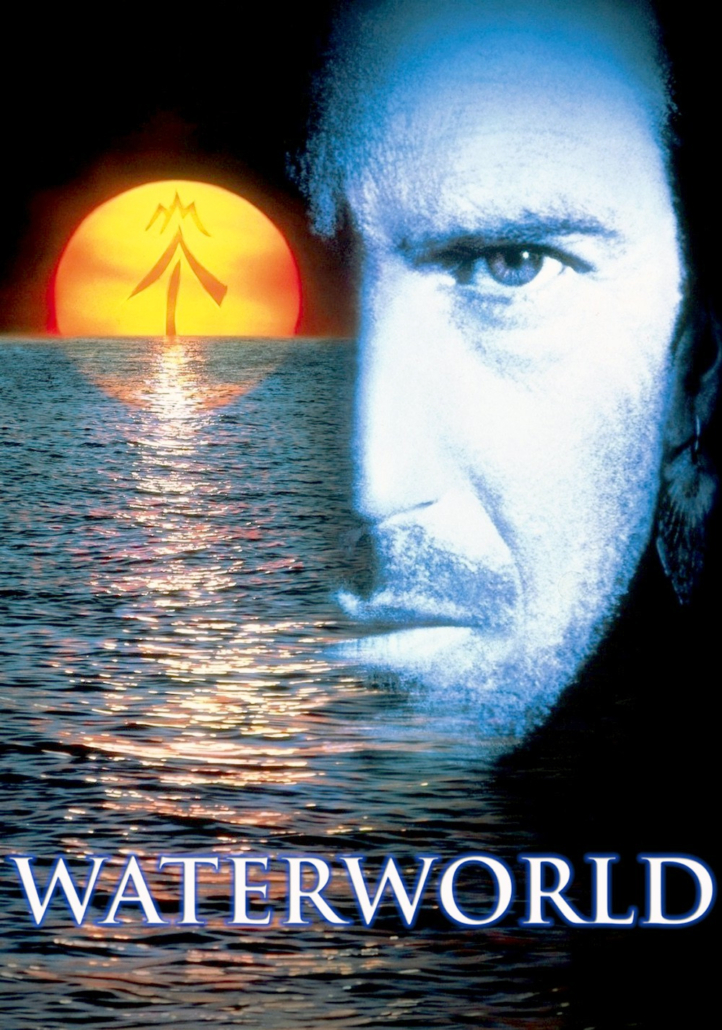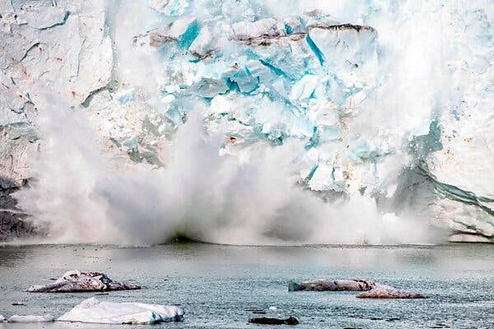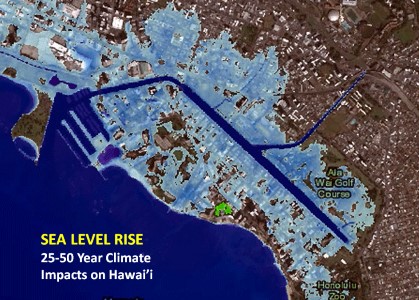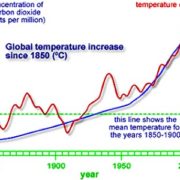Waterworld 2020
Waterworld was a big screen production filmed off the Big Island in 1995. The film depicted a post-apocalyptic world in which human-driven global warming of the planet had reached its final conclusion, after the melting of Greenland and the polar ice caps, leaving most of the globe underwater. 
Waterworld screenwriter, Peter Rader, says he was an early adopter to climate change warnings, which provided part of the inspiration for Waterworld. “I wrote the original draft in 1986 very much thinking about global warming, even back then. We didn’t have Google at the time, but if you went to any library you could easily find out that if all the ice melted, the sea would rise and cover much of the Earth’s land mass.”
Fast forward your VCR to today, and thanks to environmental activists like Greta Thunberg, and the near daily reports of climate warming impacts from around the world, public awareness and concerns have moved climate-related topics to the front page of the world’s media – a hot topic, especially among America’s younger generations who will live with the global failure of humankind to take immediate measures to address global warming and mitigate its fossil-fueled consequences. For them, Waterworld isn’t just a movie: It’s a dire warning call of a world to come.
Loss of Greenland Ice Sheet Reached a Record Last Year
The ice loss in 2019 was more than twice the annual average since 2003.
Greenland lost a record amount of ice in 2019, researchers reported Thursday. Nearly half of it was lost in July, when the region roasted from an unusual heat wave.
The net ice loss of more than 530 billion metric tons was more than twice the annual average since 2003, the scientists said. In July, when warm air from Europe moved north, leading to temperatures that were well above normal and causing widespread surface melting of the ice sheet, the loss was roughly equal to the average loss in a full year.
Greenland’s ice sheet is nearly two miles thick in places, and if all the ice were to melt, sea levels would rise about 24 feet.
That kind of catastrophic melt down could take a century or two. But since the 1990s, as the Arctic has warmed faster than any other part of the planet, ice loss from Greenland and its contribution to sea level rise have accelerated.
But ice loss can vary from year to year. So far in 2020, he said, net ice loss appears to be a little below average. Both 2017 and 2018 had colder-than-usual summers, when cold air flowed from the north along the west coast of Greenland, reducing ice loss. But in 2019 that circulation pattern was reversed, with warm air coming from the south.
Many scientists are increasingly seeing a link to global warming that is made worse by sea-ice loss in the Arctic Ocean.
 In Greenland, ice loss results from runoff of surface meltwater and from discharge of ice from glaciers that serve as outlets for the ice sheet, connecting it to the ocean. Accumulation results from snowfall that, compressed over years, eventually becomes ice. When runoff and discharge exceed accumulation, the result is net loss.
In Greenland, ice loss results from runoff of surface meltwater and from discharge of ice from glaciers that serve as outlets for the ice sheet, connecting it to the ocean. Accumulation results from snowfall that, compressed over years, eventually becomes ice. When runoff and discharge exceed accumulation, the result is net loss.
“Mass (ice) loss is not going away anytime soon,” Dr. King said, said the study’s lead author. “But of course we have control over the rate by taking steps to mitigate climate change“. “It’s not a throw-your-hands-up kind of situation,” she said.





Leave a Reply
Join the Community discussion now - your email address will not be published, remains secure and confidential. Mahalo.